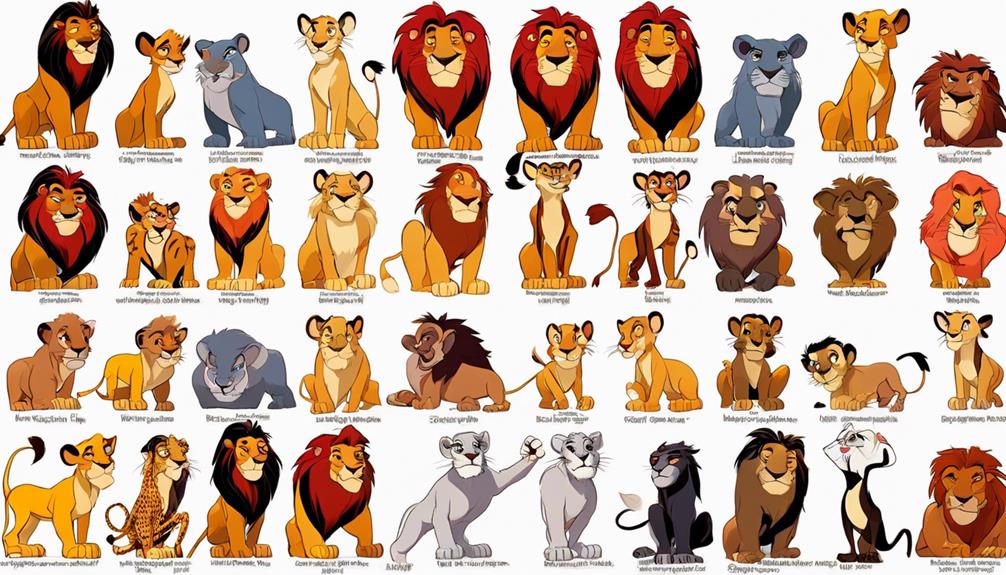Have you ever, by chance, considered the complex relationship of power between Alpha and Omega personalities within social structures? The delicate balance between control and acquiescence, authority and autonomy, provides a detailed insight into the forces at play in our social engagements on various levels.
As we explore these contrasting roles, one can't help but wonder how these dynamics influence our daily interactions, shape group dynamics, and impact societal structures.
Stay tuned to uncover the hidden complexities and implications of Omega vs Alpha in the intricate web of social hierarchy.
Key Takeaways
- Alpha and Omega interactions shape social hierarchies and leadership dynamics.
- Balancing dominance and introspection is crucial for successful navigation.
- Leveraging power strategically involves understanding status and adapting behavior.
- Effective communication and empathy enhance cooperation and harmony within groups.
The Role of Alpha Individuals
In social hierarchies, alpha individuals play a pivotal role as dominant, confident leaders who assertively influence and control group dynamics. Alphas are characterized by their strong presence, unwavering confidence, and extroverted nature. Their ability to command attention and lead with assertiveness sets them apart in various social settings. These individuals thrive in positions of power, often taking charge of decision-making processes and steering the group towards their vision. Alphas possess a natural charisma that draws others to them, allowing them to effectively influence and inspire those around them.
Their leadership qualities are innate, making them adept at navigating the complexities of social hierarchies. In the animal kingdom, alpha individuals lead the pack, ensuring order and cohesion within the group. Understanding the dynamics of alpha personalities is essential for comprehending power structures and interactions within social groups. By recognizing the role alphas play in shaping group dynamics, individuals can better comprehend the intricate balance of power and influence that exist within social hierarchies.
Characteristics of Omega Personalities

Observing the intricate dynamics of social hierarchies reveals the distinct characteristics of Omega personalities, marked by traits such as introspection, observance, and independence. Omega individuals tend to avoid the spotlight, preferring to cultivate deeper, more meaningful connections rather than engaging in superficial interactions. Their unique perspective often brings a fresh lens to social situations, offering insights that others may overlook.
Sensitivity to criticism is a common trait among Omegas, leading them to navigate conflicts with a preference for avoidance rather than confrontation. This conflict-avoidant approach is coupled with a more submissive demeanor, emphasizing harmony within social interactions. Despite these tendencies, Omega personalities play a vital role in social hierarchies, offering valuable contributions that stem from their introspective nature and independence.
Understanding the intricacies of Omega personalities is essential for recognizing and appreciating the depth they bring to social dynamics. By acknowledging their strengths in observance, introspection, and meaningful connection-building, a more comprehensive understanding of social hierarchies can be achieved.
Impact of Alpha-Omega Interactions
The dynamics of social hierarchies are significantly influenced by the interactions between Alpha and Omega personalities, shaping leadership dynamics, decision-making processes, and conflict resolution strategies. The power dynamics within these interactions play a crucial role in determining the direction and functioning of social structures. Alphas often set the tone for leadership roles, while Omegas contribute to the group by providing unique perspectives and approaches. Conflict resolution strategies are impacted by how Alphas and Omegas navigate disagreements and power struggles within the hierarchy. Effective communication between these personalities is essential for maintaining group cohesion and fostering productivity.
Understanding the impact of Alpha-Omega interactions goes beyond surface-level observations; it delves into the intricate relationship dynamics that underpin social hierarchies. By examining individual behavior patterns within these interactions, we gain insights into the subtle power shifts and cooperation dynamics that influence group dynamics. Enhancing communication channels and mutual respect between Alphas and Omegas can lead to more harmonious relationships and efficient decision-making processes within the social hierarchy.
Navigating Social Hierarchies Successfully

Successfully navigating social hierarchies involves skillfully balancing dominance and subordination traits while recognizing and respecting the diversity of personality traits and roles within a group. To achieve this, individuals must understand the intricate power dynamics at play and adapt their behavior accordingly.
Here are three key strategies for navigating social hierarchies successfully:
- Embrace a Flexible Approach: Flexibility is crucial when interacting within a social hierarchy. Being able to adjust your communication style, level of assertiveness, and willingness to collaborate based on the situation can help you navigate various power structures effectively.
- Practice Empathy and Understanding: Recognizing the alpha and omega traits in yourself and others can foster empathy and understanding within the group. By appreciating the different roles and strengths each individual brings, you can build stronger relationships and enhance overall group dynamics.
- Maintain Open Communication: Clear and open communication is essential for navigating social hierarchies. Establishing healthy boundaries, expressing opinions respectfully, and actively listening to others can help maintain a harmonious balance between dominance and subordination traits in the group.
Leveraging Power Dynamics Strategically
Understanding the strategic leverage of power dynamics involves a nuanced grasp of how status, authority, and social positioning influence interactions. In a wolf pack, for instance, the Alpha and Omega traits play a crucial role in determining the social structure. Alphas are typically dominant and assertive, while Omegas are more submissive. When individuals interact within a social hierarchy, recognizing these roles and traits becomes essential. Gender roles can also influence power dynamics, highlighting the importance of recognizing and navigating them effectively.
The Science Behind leveraging power strategically lies in knowing when to assert authority, collaborate, or negotiate to achieve desired results. It's crucial to be confident and assertive, yet also empathetic and adaptable. By understanding the dynamics at play, individuals can navigate social hierarchies successfully and avoid conflict. Building alliances and honing communication skills are also key strategies for enhancing one's influence and achieving goals within a given social context.
Frequently Asked Questions
What Are Alpha and Omega Dynamics?
Alpha and omega dynamics encompass hierarchical power structures in social groups, with alpha symbolizing dominance and omega representing subordination. These roles are evident in various settings like relationships and organizations. Understanding these dynamics aids in navigating power struggles and decision-making processes effectively.
The interchangeability of alpha and omega roles is influenced by individual traits and contextual factors. Balancing these traits is essential for fostering harmony, communication, and respect in relationships.
What Is the Difference Between Omega and Alpha?
We see the distinction between omega and alpha males in their contrasting traits. Alphas are often assertive and outgoing, while omegas tend to be introspective and independent. These differences shape how they navigate social interactions and power dynamics.
Alphas may excel in leadership roles with their confidence, while omegas bring a unique perspective to discussions with their introspection. Understanding these distinctions can enhance our grasp of social hierarchy dynamics and interpersonal relationships.
What Is the Omega in Hierarchy?
The omega in a social hierarchy represents the lowest-ranking individual. They often display submissive behaviors and may experience exclusion or bullying within group dynamics. Despite their position, omegas play crucial roles in promoting social harmony and reducing conflict.
Understanding the omega's place in the hierarchy is essential for navigating power dynamics and fostering inclusivity in social settings. This comprehension enables a more comprehensive approach to social interactions and group dynamics.
Who Is More Powerful Alpha or Omega?
When comparing the power dynamics between alpha and omega wolves, it's essential to recognize that power is multifaceted.
While alpha wolves often hold authority and enjoy privileges, omega wolves contribute to pack cohesion and harmony.
Both roles play crucial parts in maintaining the pack's balance.
Rather than viewing power as a linear hierarchy, understanding the nuanced interplay between alpha and omega dynamics reveals a complex web of influence and cooperation within wolf societies.
Conclusion
In conclusion, understanding the power dynamics between Omega and Alpha personalities is crucial in navigating social hierarchies successfully. By recognizing the unique characteristics and interactions between these individuals, we can leverage power dynamics strategically to foster healthy relationships and effective leadership.
Just as in a chess game, where each piece plays a vital role in achieving victory, so too do Omega and Alpha personalities contribute to the intricate balance of social dynamics.
Felicity, our Author, pens in-depth articles and guides that delve into the heart of personal discovery. Her narrative-driven approach weaves together theory, practice, and personal anecdotes, making the journey of self-exploration both relatable and inspiring. Felicity’s contributions help illuminate the path for those seeking a deeper understanding of themselves and their relationships.










